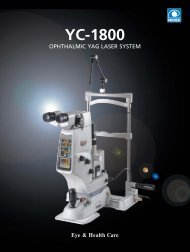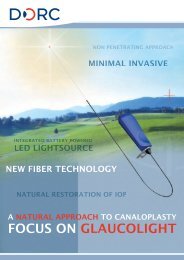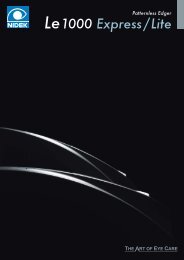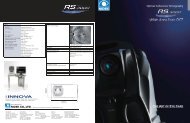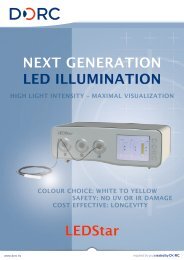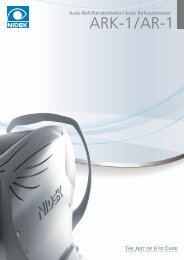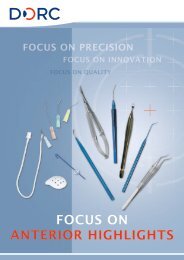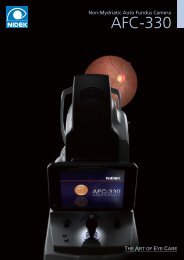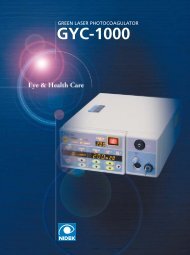Reichert Ocular Response Analyzer Measures Corneal ... - innova
Reichert Ocular Response Analyzer Measures Corneal ... - innova
Reichert Ocular Response Analyzer Measures Corneal ... - innova
- No tags were found...
Create successful ePaper yourself
Turn your PDF publications into a flip-book with our unique Google optimized e-Paper software.
Figure 17 – IOPCC vs. CCT for a populationof normal eyes N = 182In addition to providing pressure measurements that areuninfluenced by CCT, the <strong>Ocular</strong> <strong>Response</strong> <strong>Analyzer</strong>facilitates post-LASIK IOP measurements that appearto remain consistent with pre-LASIK measurements.IOPCC values for 14 eyes pre and post LASIK are shownin Figure 18. Whereas Goldmann-measured IOP valuesare known to drop between 2-6 mmHg post LASIK, theaverage post-LASIK IOPCC reduction in this populationis less than 1 mmHg.SummaryFigure 19 – IOPCC and IOPG in 24 NTG eyesThe dynamic bi-directional applanation processemployed in the <strong>Reichert</strong> <strong>Ocular</strong> <strong>Response</strong> <strong>Analyzer</strong>facilitates the measurement of <strong>Corneal</strong> Hysteresis (CH).The CH phenomenon is observable due to viscousdamping in the cornea and permits the calculation of<strong>Corneal</strong> Resistance Factor (CRF) which appears toreflect the overall resistance of the cornea. Both metricsare new measurements of the biomechanical propertiesof the cornea.The ability of the device to characterize thebiomechanical properties of the cornea enables thecalculation of IOPCC, a measure of Intraocular Pressurethat is less influenced by corneal properties thanGoldmann or other currently available tonometers.IOPCC is unaffected by corneal properties such as CCTand remains essentially unchanged after LASIK.Observing the IOPCC of a population of Normal TensionGlaucoma (NTG) subjects, reveals that the pressure inthese eyes is significantly higher than indicated by thetraditional Goldmann-correlated IOP measurement. Inthis population, IOPCC is , on average, more than 2.25mmHg higher than IOPG (Figure 19).This chart also demonstrates the <strong>Ocular</strong> <strong>Response</strong><strong>Analyzer</strong>’s unique ability to simultaneously providea Goldmann-correlated IOP measurement (IOPG) aswell as the IOPCC value. With this feature clinicianscan observe the difference between the two values forreference purposes.Figure 18 –IOPCC pre and post LASIK in 14 eyesPublished and preliminary results from clinical studies inprocess worldwide suggest these new parameters may beclinically useful in a number of different areas including,but not limited to: Identification of corneal diseasessuch as keratoconus and Fuchs’ Dystrophy, Glaucomadiagnosis and management, screening potential LASIKcandidates, and accurate IOP measurement.<strong>Reichert</strong> would like to acknowledge the following individuals forproviding clinical data cited in this paper: Dr. Clifford Scott, OD;Mr. Sunil Shah, MD; Dr. James Brandt, MD, Dr. David Castellano,MD; Dr. Jay Pepose, MD; and Dr. Mitsugu Shimmyo, MD.<strong>Reichert</strong>, Inc.3374 Walden Avenue, Depew, NY 14043Toll Free: 888-849-8955 | Tel: (716) 686-4500Fax: (716) 686-4545 | www.reichert.com


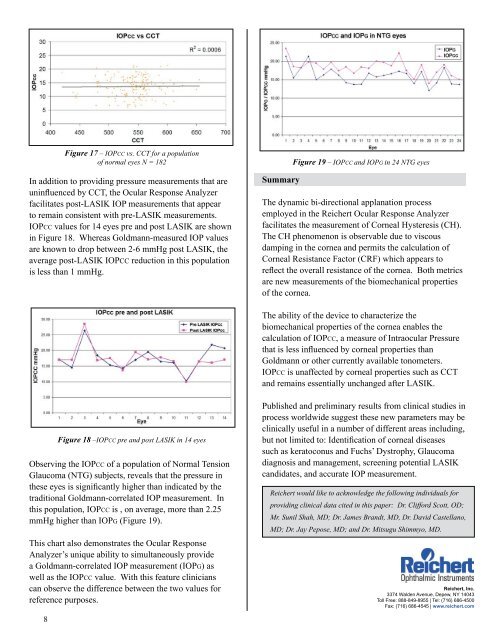
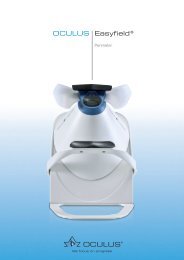
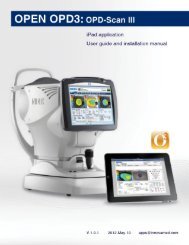
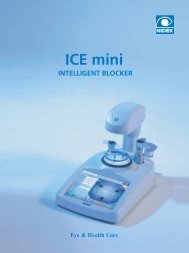
![OCT Setting: CORNEA RADIAL 6( 6.0mm[1024] ) - innova](https://img.yumpu.com/48127738/1/190x146/oct-setting-cornea-radial-6-60mm1024-innova.jpg?quality=85)
